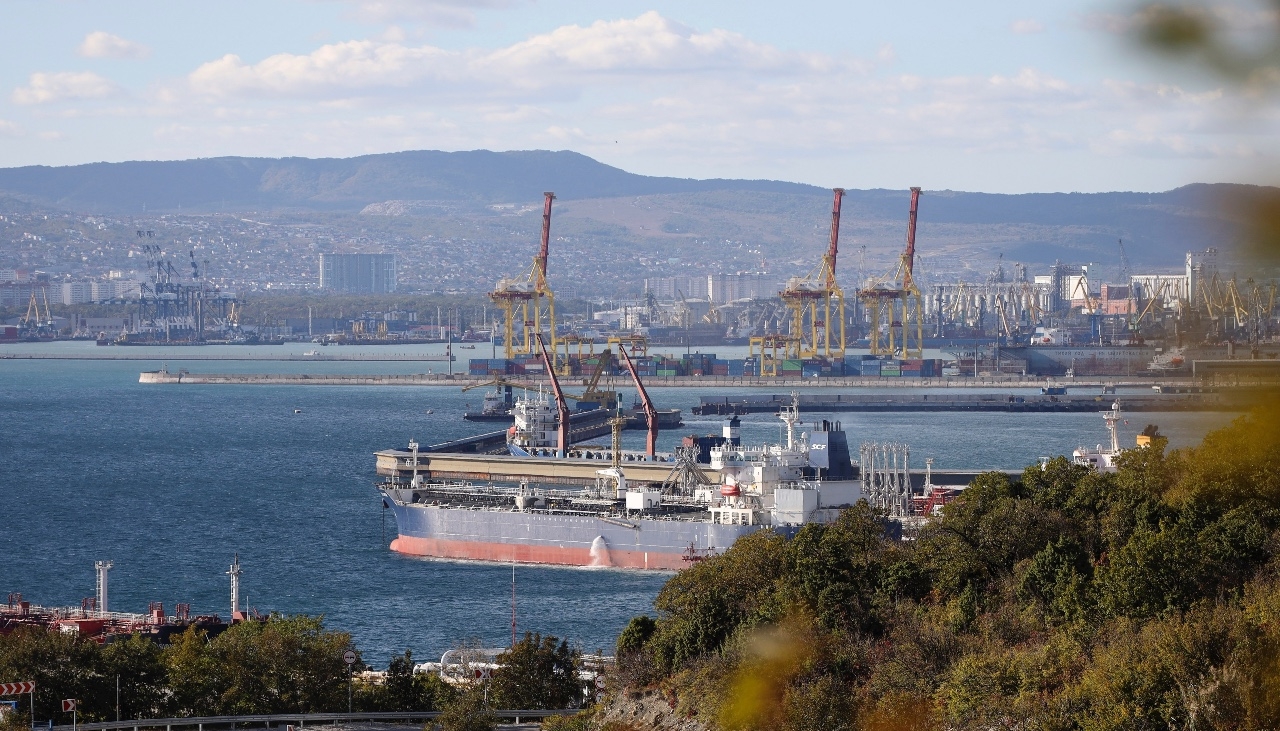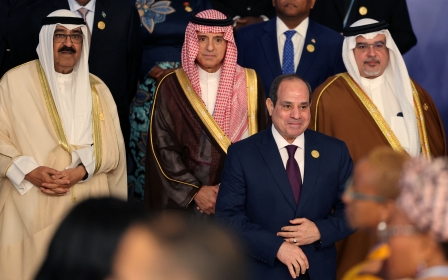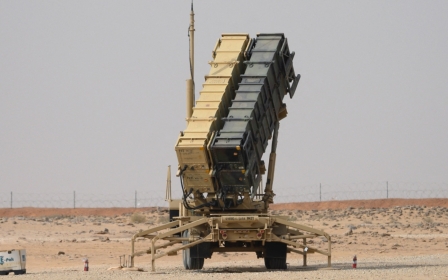'Trading places': Moscow muscles in on Saudi Arabia's oil sales to Asia

Saudi Arabia is selling more oil to Europe, while Russia is chipping into the kingdom’s Asian market share, a rewiring of the energy trade that is likely to accelerate after the West imposed new penalties on Russian crude sales.
Saudi crude exported to Europe via Egypt’s Sumed pipeline and Saudi ports averaged 798,000 barrels per day (bpd) between October and November 2022, a 17 percent increase compared to the 663,000 bpd between January and February, before Russia’s Ukraine invasion, according to data shared with Middle East Eye by the Vortexa analytics firm.
The upswing comes as Europe looks to cut its reliance on Russian energy following the invasion of Ukraine. Seaborne crude exports from Russia to Europe have plunged to historic lows, hitting 309,000 bpd in the 28 days leading up to 2 December - down from about 1.5 million bpd before the Ukraine invasion.
Europe is 'rushing to get off fossil fuels as quickly as possible'
- Jim Krane, Rice University's Baker Institute
“Refiners in Europe need to look somewhere for their supplies and Saudi Arabia is picking up a lot of that business,” Jim Krane, an energy expert and fellow at Rice University's Baker Institute, told MEE.
“More Saudi crude oil is heading to Europe,” Jay Maroo, a lead crude analyst at Vortexa, told MEE.
“It’s a natural consequence of Europe taking less Russian oil. Saudi Arabia is a sensible substitute given its quality, similar composition and proximity.”
The global oil trade’s rejigging took a step towards codification on Monday after the EU and UK banned the import of Russian crude. The move came along with an agreement by the G-7 to impose a cap on the price of Russian oil at $60 a barrel.
The cap is designed to allow the continued flow of Russian oil while limiting Moscow’s ability to profit from the sales.
Shippers will only be able to access insurance and other maritime services if the oil they carry is priced at or below the cap. The West believes it can pass the price ceiling onto Russian customers in China, India, and Turkey because most insurers are located in the EU and other G7 countries.
Russia's great task
While Europe is decoupling itself from Russia, its historic energy supplier, other buyers are gorging on discounted Russian crude supplies and cutting back on purchases from the Middle East.
In October, Russia surpassed Saudi Arabia as India’s top crude supplier. India is the second-largest market for Saudi oil after China, but its market share has shrunk.
Saudi exported 708,000 bpd of crude to India from 11 October to 4 December, in the lead-up to the western price cap - a 27 percent plunge from the 55-day period before Russia’s 24 February invasion of Ukraine, when exports stood at 969,000 bpd, according to data shared with MEE by tankertrackers.com.
'Saudi Arabia and Russia are competing for a finite amount of demand in Asia'
- Ben Cahill, CSIS
European imports of Russian oil have been shrinking since the invasion of Ukraine, but Monday’s ban underscores Russia’s need to sell to Asia, analysts say.
“Russia’s great task now is to redirect its oil to India, China and Turkey. As a result of this, there is a reordering of crude flows around the world,” Ben Cahill, a senior fellow in the energy security and climate change programme at the Center for Strategic and International Studies (CSIS), told MEE.
Krane, from the Baker Institute, said Saudi Arabia and Russia “are basically trading places” in the market, before adding that the switch could unnerve Riyadh.
“Europe is yesterday’s oil market. It’s rushing to get off fossil fuels as quickly as possible,” he said.
“Saudi Arabia doesn’t want to be losing market share in the big growth markets of Asia and trading them for stagnant to declining European markets,” Krane added.
On Monday, Saudi Arabia cut its January selling price for oil in Asia, a sign of concern about weak demand in the market, but also the potential for increased competition with Russia.
In order to lure buyers in the face of the western price cap, some analysts predict Russia will have to slash prices even further. So far, Saudi Arabia has kept quiet about lower Russian prices, but if the trend in markets like India continues, it could lead to a potential point of friction between Riyadh and Moscow.
“Saudi Arabia and Russia are competing for a finite amount of demand in Asia,” Cahill said. “Saudi Arabia is not going to be happy about losing market share to Russia.”
Riyadh was criticised for supporting a two million bpd oil price cut in October that the Biden administration said amounted to "Opec+ aligning with Russia". The kingdom defended the move as necessary to support prices in the face of weak demand.
But Brent crude, the international benchmark, which stood at $93.37 a barrel when Opec+ met in October, has slumped about 15 percent over the last two months. The price on Tuesday stood at $79.44 a barrel.
The introduction of a price cap complicates the outlook for the oil market going forward. Russia has threatened to not sell to countries following the measures. Meanwhile, hiccups from the plan have already emerged, with reports of an oil tanker jam forming in the Turkish straits.
In a sign of the uncertainty, Opec+ on Monday had a quiet meeting where it agreed to keep oil production steady.
Middle East Eye propose une couverture et une analyse indépendantes et incomparables du Moyen-Orient, de l’Afrique du Nord et d’autres régions du monde. Pour en savoir plus sur la reprise de ce contenu et les frais qui s’appliquent, veuillez remplir ce formulaire [en anglais]. Pour en savoir plus sur MEE, cliquez ici [en anglais].





